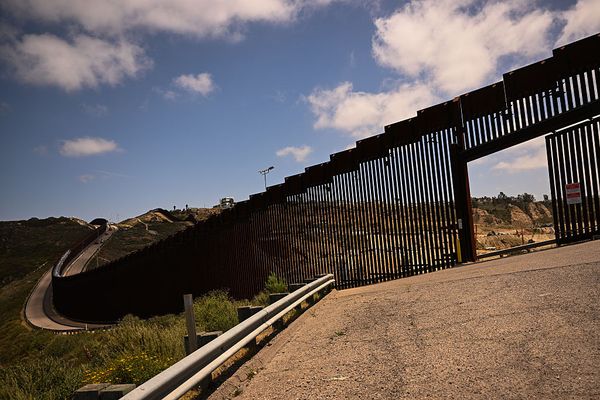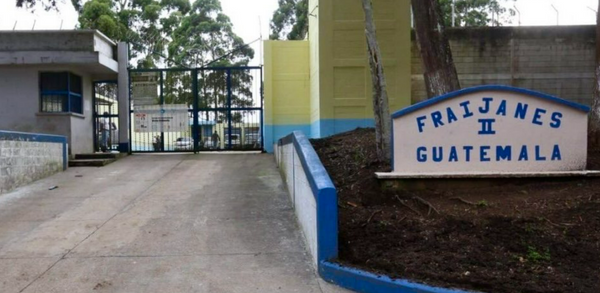The Federal Reserve left its key interest rate unchanged and painted a status-quo picture of a "solid" economy and job market, despite elevated uncertainty from Trump administration policies. The S&P 500 traded slightly lower after Fed Chairman Jerome Powell wrapped up his news conference.
Markets got a lift from overnight news that Treasury Secretary Scott Bessent will hold trade talks with China over the weekend, but initially turned lower on the Fed's outlook for rising risk of stagflation — higher inflation along with higher unemployment. While the S&P 500 found its footing as Powell spoke, after an initial selloff, he made clear that the Fed's job could get complicated if it's forced to choose between its two mandates: full employment and price stability.
3:17 p.m. ET
Fed "Might Be Too Late" To Cut
"The Federal Reserve is in a bind — with concerns about inflation and an economic slump, which will lead to higher unemployment, pulling them in two opposite directions," wrote Chris Zaccarelli, chief investment officer for Northlight Asset Management.
"Because of this, the Fed is going to have to wait for unemployment to spike before they resume cutting rates, and by that point it might be too late."
"The markets are going to increasingly worry about a recession, and unless some trade deals are made before the tariff pause runs out, we are going to see markets drop again like they did in early April."
3:15 p.m. ET
Reaction To Fed: 'A Tricky Spot'
Matthew Pallai, Chief Investment Officer at Nomura Capital Management: "Although many market participants are focused on the potential for recession, the Fed's mandate – to manage employment and inflation – puts them in a tricky spot here. They may need to run a higher risk of falling into recession than most would like before they have enough evidence to make a decision."
3 p.m. ET
June Fed Rate-Cut Odds Dip
As Fed Chairman Jerome Powell speaks, markets are pricing in 26% odds of a rate cut at the June 18 meeting, according to CME Group's FedWatch tool. That's barely down from 28% ahead of the Fed policy update.
The odds of a rate cut by the July 30 meeting are down to 71.4% vs. 78.1% on Tuesday.
Bottom line, the Fed meeting hasn't really changed anything.
2:54 p.m. ET
Powell: Risks Haven't Shown Up In The Data
Elevated Uncertainty is "extremely elevated and the downside risks have increased," Powell said, but those risks haven't materialized yet.
"It just hasn't shown up yet" in the data.
Businesses and households are delaying decisions. If that continues, the data is likely to weaken. But for now, consumers keep spending.
2:51 p.m. ET
Fed Might Have To Weigh Inflation Vs. Unemployment
Powell said the Fed is pondering the possibility that both unemployment and inflation are running above target. In that case, Fed policy will weigh how far the mandates are from their goals and how long it would take to get back to target.
Powell said the Fed hasn't been in the position for a long time, adding that it's a hypothetical question for now.
2:46 p.m. ET
Powell: No Pre-emptive Action
"There's so much uncertainty about the scale, scope, timing of the tariffs," Powell said. With inflation running above target, and an expectation that inflation will move further above target, "it's not a situation where we can be pre-emptive."
2:44 p.m. ET
Powell Says Fed Will Be Patient
"I don't think we can say which way this will shake out." It's too early to know the implications for inflation and employment, Powell said. "It's an economy that's been resilient and is in good shape."
"The data may move quickly or slowly," Powell said. But for now, he said, the Fed is in a good position to wait for the policy outlook and its economic impact to evolve.
"We don't feel we need to be in a hurry," Powell said. For now, the appropriate thing to do is wait.
2:38 p.m. ET
S&P 500 Now Up Slightly
The S&P 500 is up 0.2% after Fed chief Powell's opening statement.
2:37 p.m. ET
Powell Also Sees Stagflation Risk From High Tariffs
If the large increases in tariffs that have been announced are sustained, Powell said inflation and unemployment are both likely to rise. He reiterated his early April statement that the Fed's dual mandates could be in "tension."
Powell said that the Fed will balance its two mandates, but stressed that price stability could take precedence if policymakers judge that inflation expectations are becoming unanchored.
2:35 p.m. ET
Powell: Longer-Run Inflation Expectations OK
"Most measures of longer-term inflation remain consistent with our 2% inflation goal."
2:33 p.m. ET
Reaction To Fed Statement
The Fed sees risks as "evenly balanced and wants to wait for more information before reducing the funds rate again," wrote Samuel Tombs, chief U.S. economist at Pantheon Macroeconomics. That points to a rate cut being more likely in July than June. By then, he notes, the 90-day reciprocal tariff delay will be over.
2:31 p.m. ET
Powell Takes Stage; S&P 500 Down
The S&P 500 is down 0.15% as of 2:31 p.m. ET, as Fed chief Jerome Powell takes the stage.
2:22 p.m. ET
Is The Fed Statement Hawkish?
While the Fed policy statement clearly raises concern about the inflationary impact of tariffs, that's balanced by concern over rising unemployment, which is usually disinflationary.
Powell will elaborate about the Fed's thinking on how to respond to tariff-related inflation. In March, Powell said that the base case is that a one-time rise in prices due to tariffs would be transitory. However, on April 4, Powell took on a more hawkish tone, saying that the Fed must "make certain that a one-time increase in the price level does not become an ongoing inflation problem."
2:17 p.m. ET
Fed: Unemployment, Inflation Risks Rising
This is what is catching investors' attention ahead of Powell.
The Fed said that both of its mandates, full employment and price stability, are at risk. The policy committee "judges that the risks of higher unemployment and higher inflation have risen."
2:14 p.m. ET
Stocks Weaken
The S&P 500 is now down 0.4%. The 10-year yield is just below 4.27%.
2:10 p.m. ET
Fed Comparing Today Vs. Past, Future
The Fed statement, it should be noted, is comparing the level of uncertainty to conditions as of the March 19 meeting. While the S&P 500 and markets have rallied as Trump put a 90-day delay on reciprocal tariffs above 10% and made efforts to begin a dialogue with China, there's still little visibility into what will happen after the 90 days are up.
Meanwhile, the Republican-controlled Congress is racing to pass major tax cuts, as well as spending cuts, with little clarity so far on the economic impact.
2:07 p.m. ET
Fed Highlights Increased 'Uncertainty'
The Fed policy statement doesn't give the Trump administration credit for de-escalating the trade war, saying "uncertainty about the economic outlook has increased further." The statement signaled rising stagflation risks as well. "The Committee is attentive to the risks to both sides of its dual mandate and judges that the risks of higher unemployment and higher inflation have risen."
Powell has stressed that the full Trump policy agenda, including fiscal, immigration and regulatory policies, in addition to trade, is what matters for monetary policy.
2:04 p.m. ET
Stock Market Reaction Muted
The S&P 500 index rose 0.15% shortly after the Federal Reserve policy statement. The S&P 500 was up about 0.1% just before 2 p.m. ET, paring modest gains into the announcement. The 10-year Treasury yield is now 4.275% after dipping to 4.28% just before the Fed announcement.
2 p.m. ET
Fed Leaves Key Rate Unchanged
The Fed's policy-setting committee left the target federal funds rate at a range of 4.25% to 4.5%, as expected.
Federal Reserve Meeting Policy Statement
With virtually no chance of a rate cut, markets will focus on the language Fed policymakers use to describe the state of the economy. The March 19 statement characterized the economic growth and labor market conditions as "solid" and inflation as being "somewhat elevated."
Despite the stronger-than-expected April jobs report, it's possible that the Fed statement or Powell news conference may indicate further softening. The jobs report's mid-April employer survey was too soon to reveal any weakening after the April 2 reciprocal tariff launch. However, the Fed's own April 16 Beige Book anecdotal report did indicate "a slight deterioration" in labor market conditions, with slight employment declines in three of 12 Federal Reserve districts.
Powell's Take On Trump Tariffs
Powell has stressed that what matters for monetary policy is the full spectrum of Trump policies, including not just tariffs, but fiscal, immigration and regulatory changes. Further, Powell has said that the strong economy allows the Fed to wait for clarity on forthcoming policies before resuming rate cuts from the current restrictive level.
In his news conference after the March 19 Fed meeting, Powell said the base case is that tariffs would have a "transitory" inflation impact. But he took a less flexible tone on April 4, saying the effect on prices "could be more persistent." He added: The Fed's job is "to make certain that a one-time increase in the price level does not become an ongoing inflation problem."
Powell's fear about the inflationary impact of Trump tariffs may have been soothed slightly by a negligible 0.03% March rise in the Fed's primary inflation gauge, the core PCE price index, as lower airfares and hotel room rates offset firmer goods prices. On the other hand, Cox Automotive's Manheim Used Vehicle Value Index released on Wednesday showed wholesale prices of used cars surged 2.7% in April.
Fed Rate-Cut Odds
Following the stronger-than-expected April jobs report, markets are now pricing in just 28% odds of a rate cut at the June 18 Fed meeting, according to CME Group's FedWatch tool. Markets see 73% odds of a rate cut by the July 30 meeting.
For the full year, markets are leaning toward 75 basis points in rate cuts, with 26% odds of fewer cuts.
S&P 500
The S&P 500 is up 0.3% in Wednesday afternoon stock market action ahead of the Federal Reserve meeting policy statement. The S&P 500 is down just over 1% this week, after putting together a nine-session, 10% rally on Trump's moves to de-escalate his trade war.
Through Tuesday, the S&P 500 stood 8.7% below its all-time closing high on Feb. 19, but up 12.5% from its 52-week closing low on April 8.
Be sure to read IBD's The Big Picture column after each trading day to get the latest on the prevailing stock market trend and what it means for your trading decisions.







